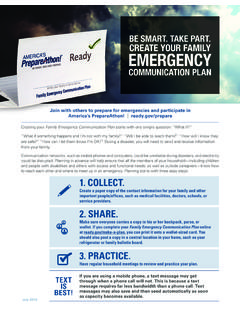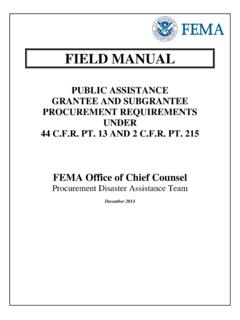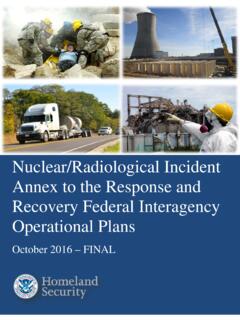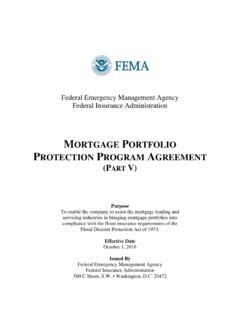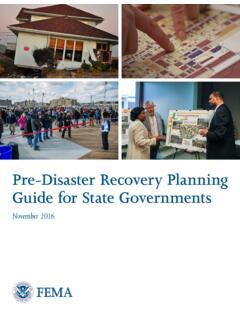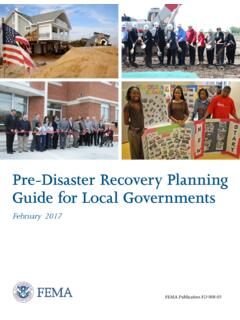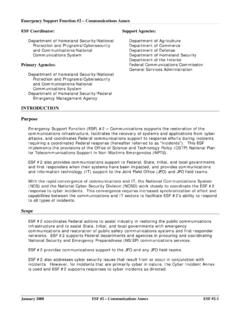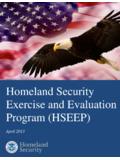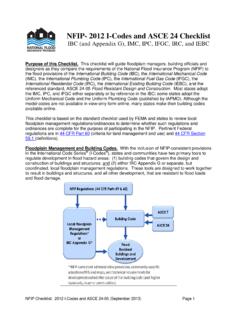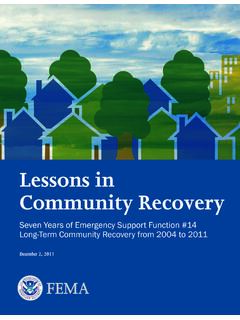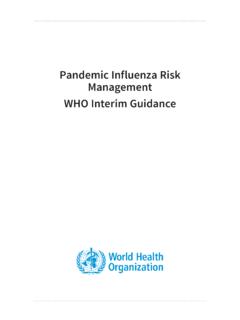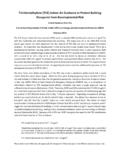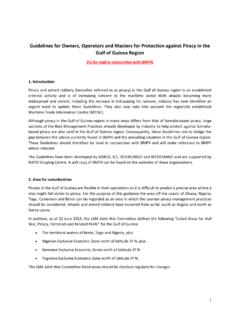Transcription of Managing the Emergency Consequences of …
1 Managing the Emergency Consequences of Terrorist Incidents interim PLANNING GUIDE FOR. STATE AND LOCAL GOVERNMENTS. Federal Emergency Management Agency July 2002. interim Planning Guide July 2002 page 1. TABLE OF CONTENTS. FOREWORD ..3. ACKNOWLEDGMENTS ..5. A. PURPOSE ..7. B. TERRORISM 1. WMD Hazard Agents ..9. 2. Other Terrorism Hazards ..13. C. SITUATION AND 1. Situation ..15. 2. Potential Targets ..17. 3. Initial Warning ..17. 4. Initial Detection ..18. 5. Release Area ..19. 6. Investigation and Containment of 7. D. CONCEPT OF OPERATIONS.
2 21. 1. Direction and Control ..21. 2. Communications ..25. 3. 4. Emergency Public Information ..27. 5. Protective 6. Mass 7. Health and Medical ..29. 8. Resources Management ..30. 9. Recovery ..30. 10. Urban Search and Rescue ..31. E. ORGANIZATION AND ASSIGNMENT OF RESPONSIBILITIES ..31. 1. Local Emergency 2. Interjurisdictional Responsibilities ..32. 3. State Emergency 4. State and Local Public Health 5. Medical Service Providers ..33. 6. Local Emergency Planning Committees, State Emergency Response Commissions, and Tribal Emergency Response 7.
3 Federal Emergency interim Planning Guide July 2002 page 2. F. ADMINISTRATION AND FIGURE. 1. Coordination Relationships in Terrorism Incident Response ..24. TABLES. 1. General Indicators of Possible Chemical Agent 2. General Indicators of Possible Biological Agent 3. General Indicators of Possible Nuclear Weapon/Radiological Agent 4. Suggested Emergency Operations Plan Elements ..16. 5. Responses to a WMD Incident and the Participants TABS. A. Suggested Format for a Terrorist Incident Appendix to a Basic All-Hazards Emergency A-1. B. Potential Participants in the Planning Process.
4 B-1. C. Federal Departments and Agencies: Counterterrorism-Specific Roles ..C-1. D. Hotlines and Online D-1. E. WMD Incident Indications and First Responder Concerns ..E-1. F. Potential Areas of Vulnerability .. F-1. G. Emergency Public Information .. G-1. H. Intergovernmental Agreements to Enhance H-1. I. Terrorism-Specific Considerations for Special J. K. K-1. interim Planning Guide July 2002 page 3. FOREWORD. The guidance included in Managing the Emergency Consequences of Terrorist Incidents: A. Planning Guide for State and Local Governments was originally produced in April 2001 as Attachment G to Chapter 6 of the Guide for All-Hazard Emergency Operations Planning, State and Local Guide (SLG) 101.
5 In the months following its publication, planners throughout the nation used it as a basis for developing Terrorism Incident Appendices to Emergency Operations Plans. The terrorist attacks of September 11, 2001, on the World Trade Center in New York and the Pentagon in Washington, , and the ensuing anthrax attacks provided an opportunity to gauge the validity of planning assumptions and to gain a perspective on issues and protocols that need to be incorporated into the planning process. The updated guidance in this document includes insights gained from interviews with responders and Emergency managers involved in the response to the September 11 attacks, the anthrax attacks, the 1995 bombing of the Murrah Federal Building, and the 1999 shootings at Columbine High School in Littleton, Colorado.
6 The interviews underscored the validity of the statement by President Dwight D. Eisenhower that plans are useless, but planning is indispensable.. The guidance in this document is designed to provide State and local Emergency management planners: A framework for developing supplemental Emergency operations plans adequate for addressing the Consequences of a terrorist act involving weapons of mass destruction. A consistent planning approach that will foster efficient integration of State, local, and Federal terrorism consequence management activities.
7 The most current information regarding the planning and operational challenges faced by communities that have dealt with terrorist events. While the April 2001 guidance provided a starting point, recent reviews of the guidance suggest a number of additional areas that should be considered as part of the State and local planning process. One participant in the response to the World Trade Center attack offered this advice to Emergency planners: Think big; remember the victims' families and the dislocated; and understand the Federal role. Other insights from the interviews and comments from review of the guidance suggest State and local planners should consider the following elements: Flexibility Terrorists thrive on elements of surprise Planners must consider the unthinkable as possible not simply plan for what has happened in the past Coordination Regional approach to planning process interim Planning Guide July 2002 page 4.
8 Coordination of local plans with adjacent jurisdictions, with State plans, and with Federal plans Inclusion of nontraditional partners and organizations, such as occupational health and safety organizations, the Postal Service, and others Communications Use of interoperable, backbone communications systems that provide open but secure communication among all response elements Contingencies Personnel protection Alternate Emergency facilities Loss of Emergency responders Loss of key leadership personnel Emergency public information and media relations procedures Terrorist events are highly visible and attract large numbers of national and international media Integration of Federal assets into local response Systems and protocols for requesting Federal assets Understanding the scope of Federal assistance
9 Strategies for incorporating Federal assets Support services Large influxes of volunteers Procedures for credentialing International visitors Family services Mental health issues The updated guidance is structured to raise awareness of these considerations. It also includes new sections on planning for the Consequences of attacks that impact infrastructure, including cyber systems; on planning for Emergency public information; and updated information about Federal programs and Web sites that have been added or changed since September 11, 2001.
10 A final consideration in keeping with Eisenhower's claim is that the planning process cannot move beyond theory until the plans are tested. Without testing, it is very difficult to know whether the process has resulted in plans that will function operationally. Detailed consideration of this issue is outside the scope of this document, but in general, testing should consist of periodic exercises that go beyond table-top exercises to include mobilization of operations center staff and communications with field personnel. interim Planning Guide July 2002 page 5.
